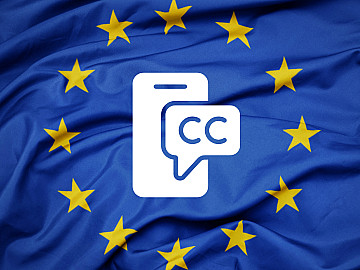Multiple-language versions, aka Foreign Versions, describe services made to translate film or video content into one or more languages.
Translating your film is the easiest way to increase accessibility to your content globally and build more fans or followers.
I demystify the process in this blog and offer guidance to get the best bang for your buck.
First up, let’s talk about translation methods.
How to Translate Film: The 3 Methods
To translate film professionally, whether, for business or entertainment purposes, there are typically three methods to choose from:
1. Closed Captions / Subtitles
2. Dubbing
3. 1 & 2 + Audio Description
But which to choose to translate your film? Let’s take a closer look at each method.
1. Closed Captions / Subtitling: Lowest Cost & Standard Accessibility
Closed Captions and Subtitles are the most affordable way to provide accessibility to non-native speakers and the deaf and hard of hearing. Typically, the cost is about a quarter of dubbing. Yep, it’s low cost.
The main reason is that 1 or 2 individuals per language (a transcriptionist and a translator/subtitler) produce the subtitles. In contrast, dubbing involves multiple translators, engineers, directors, and voice actors.
Even premium subtitling services, such as ours, are very cost-effective to translate film:
Learn more about subtitling services >
2. Dubbing: Best Value & Good Accessibility
However, dubbing offers the best way to engage audiences with the story or message because it requires less effort from the viewer. No reading skills are necessary, making dubbing the only viable option for low-literacy regions.
Translating film via a dubbing service requires more budget and time than subtitles. Therefore, it is essential to use a specialist dubbing company to translate and adapt the scripts—casting and recording with the best professional foreign voices available. For this reason, most top-tier movies, video games, and commercials are dubbed in multiple language versions.
Learn more about dubbing services >
3. Subtitling, Dubbing + Audio Description: Best Quality & Most Accessibility
Employing subtitling and dubbing services alongside audio described versions provides the maximum accessibility for premium projects. Viewers who don’t speak the film’s language natively, are deaf or hard of hearing or are visually impaired/blind will all fully comprehend the content. Whatsmore, they’ll be thankful you made the extra investment.
Many movies come with audio description versions available at cinemas and online streaming services. Audio descriptions are excellent for scene-setting to describe the moments between dialogue.
There is no better way to translate film than doing it all!
Learn more about audio description services >
Ok, I’m translating my film, but which languages should I choose?
I could write an entire book on identifying the best languages and markets to translate film. It’s a vast and complex topic.
If you’re unsure where to start, it is best to talk to one of our team. We can offer you advice concerning your project’s specific needs.
The top 10 languages aren’t necessarily YOUR top 10
The top 10 languages with most native speakers, according to Visual Capitalist’s 100 Most Spoken Languages:
1 Mandarin Chinese 918 million
2 Spanish 460 million
3 English 379 million
4 Hindi 341 million
5 Bengali 228 million
6 Portuguese 221 million
7 Russian 154 million
8 Japanese 128 million
9 Western Punjabi 93 million
10 Marathi 83 million
But this top 10 isn’t necessarily the right top ten to translate your film. English actually has the most total speakers (1,132M) including non-native and French, German, Japanese, and Norwegian are all connected to nations with high disposable incomes.
More points to consider
· the type of content (business, education, news or entertainment)
· where the audience will view it (online, event, cinema etc.)
· the available budget for foreign versions
· audience demographics, i.e. age, gender, education level etc.
If you have this information, it makes choosing the languages for the foreign versions much simpler.
Most filmmakers opt for a mixed approach, creating native closed captions and subtitles in 20 languages covering their major markets. In addition, they dub the movie in 7 of their top-grossing languages, e.g. English, French, German, Portuguese, Russian, Spanish and Arabic.
Many businesses selling products online adopt the same methodology. Indeed, video localization is vital to get taken seriously online.
Whatever languages you choose, the process of how to translate film is identical.
The Film Translation Process
a) Transcription
The first step is to create a final time-stamped script in the current language version. For dubbing projects, identifying the character/actor roles is also vital. It is best to create closed captions in the native language for subtitling projects before translating.
Learn more about closed captioning >
b) Translation
Specialist audiovisual translators adapt the speech to their native tongue whilst observing the film’s time constraints. Reading their translation aloud and a round of adaptations is essential, especially for lip-synched dubbing.
Learn more about script translation >
c) Voice actor casting and recording
A native director selects voice actors suited to the characters and may play multiple roles in the film. Recording takes place in a pro dubbing studio, and the speech is synced to a picture and mixed with the original soundtrack.
Learn more about voice-actor casting >
How much will it cost to translate film?
It’s time to get a quote. First, create a brief to include:
· your target budget
· the target market
· film duration
· script wordcount
· number of major characters
· number of minor characters (if applicable)
You’re ready to reach out to Voquent and other foreign voice-over agencies and dubbing companies for quotes.
Tell us about your film translation project.
Learn more about dubbing film
Sometimes we include links to online retail stores such as Amazon. As an Amazon Associate, if you click on a link and make a
purchase, we may receive a small commission at no additional cost to you.


















